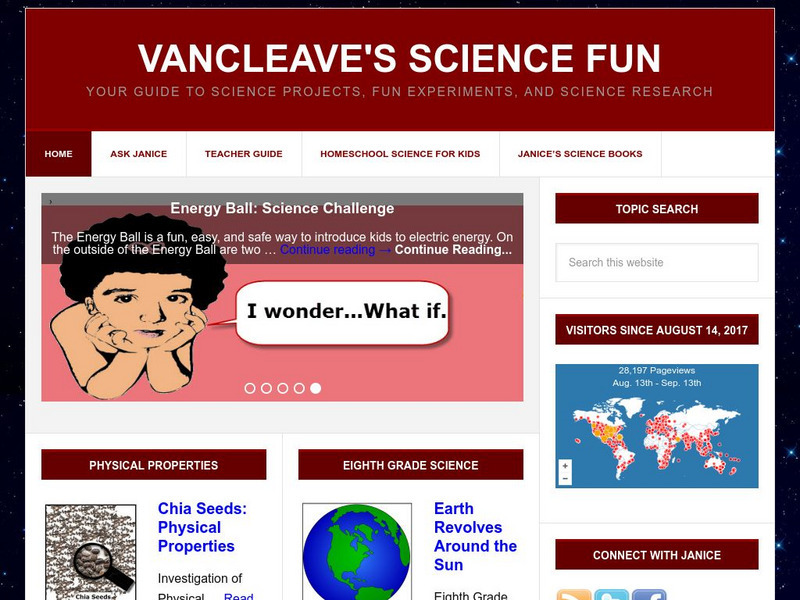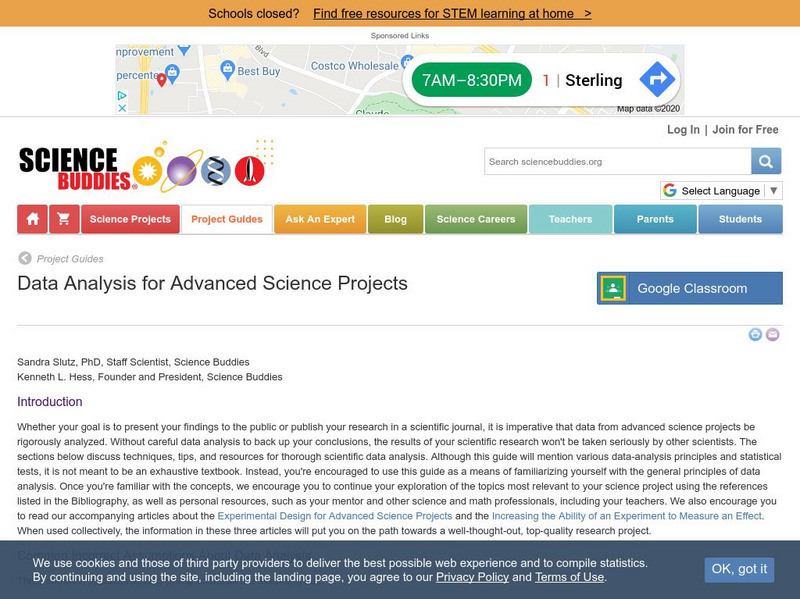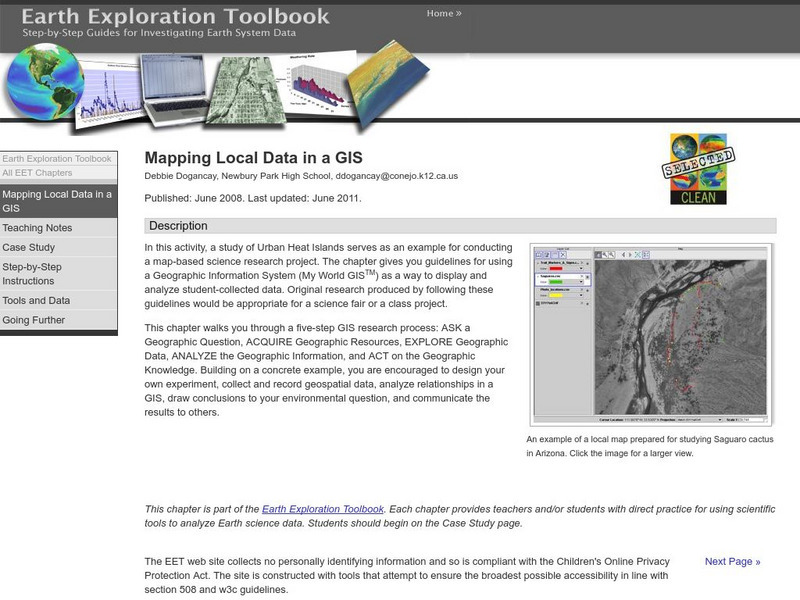New York State Education Department
TASC Transition Curriculum: Workshop 13
The six instructional shifts in this workshop definitely move math and science teachers' understanding of instruction. The workshop, 13th out of a series of 15, asks participants to examine sample tests and to look at how the six...
Discovery Education
Discovery Education: Science Fair Central: Investigation Project Samples
Explore three science fair project samples about birds, stain removal, and keeping it cool. See how the report is written after the investigation is complete.
Discovery Education
Discovery Education: Science Fair Central: Invention Project Samples
Discover how to present your findings after completing a science fair project. View sample science fair invention projects: junior light switcher, quiet down invention, and stale sandwiches.
Science Buddies
Science Buddies: Is There Such a Thing as Too Much Gaming?
In this science fair project you will examine real data from a California research scientist of over 3,000 video game players. The objective is to see if there is such thing as a videogame addict.
Science Buddies
Science Buddies: No Pain, Lots of Game
This science fair project investigates whether video games, and other forms of mental distraction, have the power to relieve pain. You will research and learn about gatekeeper cells, which control how the brain perceives pain, and how...
Science Buddies
Science Buddies: Got Iron? Measure the Concentration of Iron in Water
Iron is an important mineral essential for good health. Iron deficiency can be a problem. In this science fair project, use a simple iron test kit to measure the concentration of iron in water. This experiement is explained clearly and...
Science Buddies
Science Buddies: What Is the Woolly Mammoth's Closest Living Relative?
Although Woolly Mammoths have been extinct for thousands of years, scientists continue to learn more and more about this mighty animal. Some of the most exciting new research is being produced by looking at DNA extracted from the hair...
Discovery Education
Discovery Education: Science Fair Central: Investigation Project Steps
Read and print out steps that will help you with your science fair project, from topic forming and researching to analyzing and drawing conclusions..
Science Buddies
Science Buddies: Measuring the Speed of 'Light' With a Microwave Oven
In this experiment, you will measure the speed of light using a microwave oven, some egg white, and a ruler. This short project proves to be an extremely interesting choice for a science lab, with pictures for illustration, and thorough...
Science Buddies
Science Buddies: The Tree of Life Ii (Advanced)
Imagine that a biologist arrived at your big family reunion and had no idea who were sisters, cousins, aunts, uncles, etc., but tried to sort it out by how all of you look. Just based on how you look, would s/he be able to guess whether...
Science Buddies
Science Buddies: Do Submarines Need Fins?
In this science project, you can investigate how submarines use stabilizing fins to move forward. Exploring friction and buoyant force you will get closer to understanding how these large ships function. Research resources are included...
Science Buddies
Science Buddies: Measuring Your Threshold of Hearing
How your ears and your brain turn the sound waves out there in the world into the experience of music in your head, remains a mystery to many, but yet we all experience and even enjoy sounds and music. If you're interested in doing a...
Science Buddies
Science Buddies: Testing Behavioral Incentives
Research has shown that positive reinforcement is an effective means of influencing behavior. This experiment looks further to determine which type of reinforcement-praise or reward-is more effective with young children. The objective of...
Science Buddies
Science Buddies: Puppy Proportions: Growth Spurts & Weight Gain in a Dog
Puppies prove to be a fun and useful aid in this adorable experiment! By having access to, and measuring a puppy's body dimensions over a period of weeks or months, you can discover if segments of canine anatomy develop at different...
Science Buddies
Science Buddies: Are Fingerprint Patterns Inherited?
Fingerprints are used as reliable identification because each person's fingerprints are unique. This lab allows you to research and discover if these unique patterns are created randomly or influenced by genetics.
Science Buddies
Science Buddies: Career Profile: Diver
What fun to have a career as a scuba diver! Find out about the life of a commercial diver and the options open in such a career. This Science Buddies site lays out the requirements needed to become a commercial diver, as well as the...
Other
National Center for Earth and Space Science Education (Ncesse)
An organization committed to promoting education in the earth and space sciences. Highlights current research, projects students can participate in, professional development opportunities, and educational programs, such as visiting...
Other
Youth Science Canada: Science Fair Resources: Smarts Mentorship Guide [Pdf]
Students can find a guide that explains how to find a mentor who is willing to help them develop a successful science fair project.
Other
Van Cleave's Science Fun
Excellent guide to all things science from science projects and fun experiments to science research and homeschool science.
Montgomery CountyPublic Schools
Mcps: Using Inspiration to Organize Science Research Project
A 4-minute video showing a teacher explaining what Universal Design for Learning looks like in the context of her Grade 8 Science classroom. She discusses how it is promoting independence with students. The interviewer talks with some...
Science Buddies
Science Buddies: Data Analysis for Advanced Science Projects
The importance of data analysis in science projects is explained. Describes common mistakes young scientists make. The article then discusses how to find out what the standard methods of data analysis are for the type of research you...
Science Education Resource Center at Carleton College
Serc: Mapping Local Data in a Gis
In this activity, students will learn how to conduct a map-based science research project using a Geographic Information System (GIS). They will design an experiment, collect and record geospatial data, analyze geospatial relationships...
Science Buddies
Science Buddies: Chain Reaction: Inversion and the Pappus Chain Theorem
Here is a challenging problem for anyone with an interest in geometry. This project requires background research to solve it, but it is an excellent illustration of visual thinking in mathematics.
Science Buddies
Science Buddies: Natural Antimicrobial Agents
This abstract asks you to discover what sources you can test for antimicrobial action by culturing bacteria in the presence of an extract from a source you hypothesize to have antimicrobial properties. Antimicrobial properties have been...









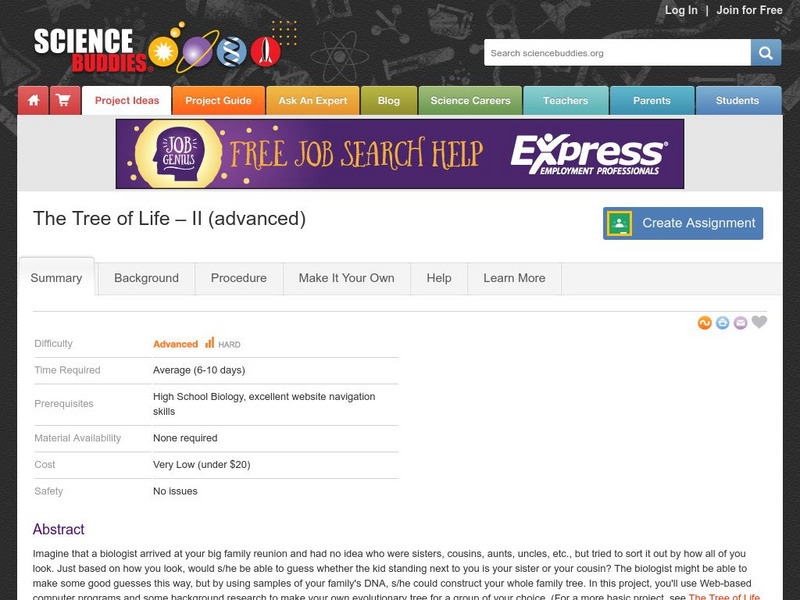
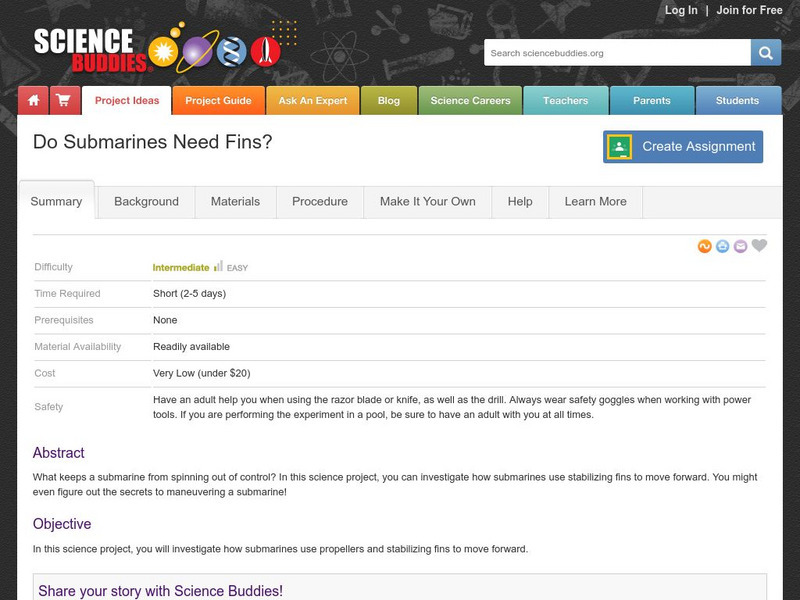
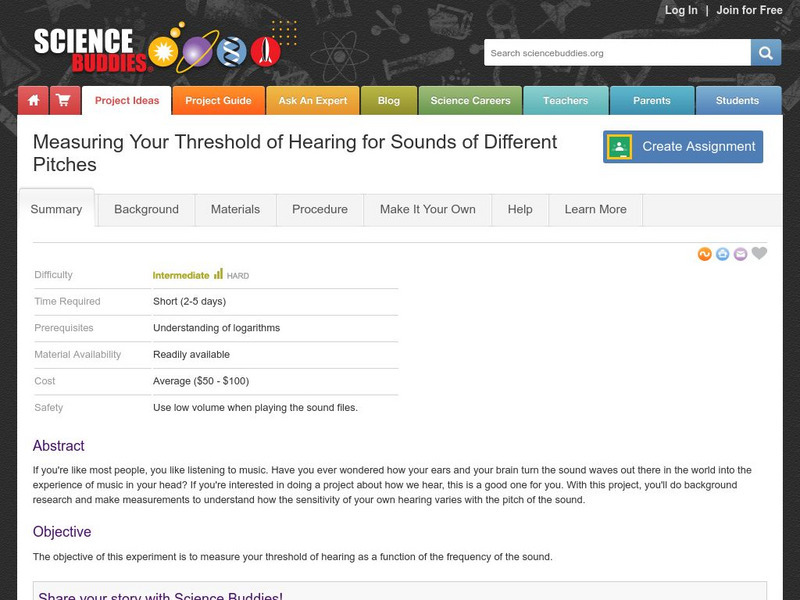

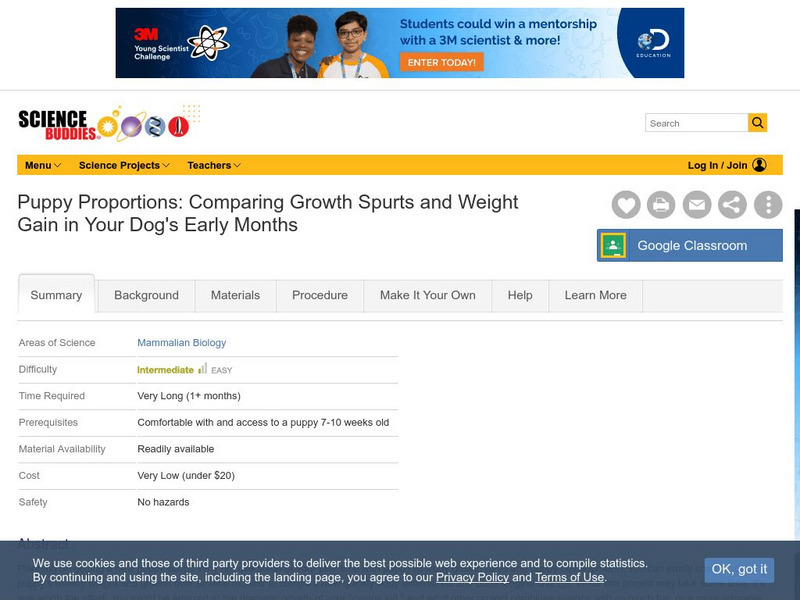

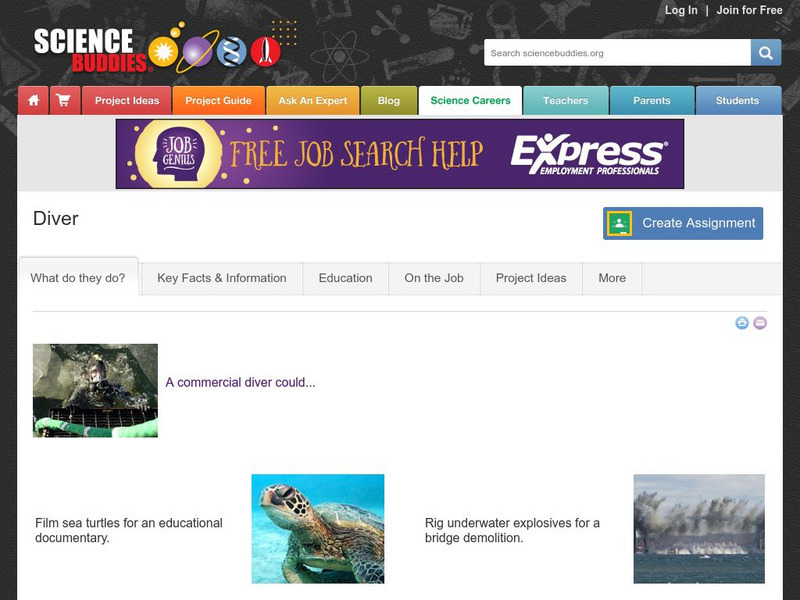
![Youth Science Canada: Science Fair Resources: Smarts Mentorship Guide [Pdf] Handout Youth Science Canada: Science Fair Resources: Smarts Mentorship Guide [Pdf] Handout](http://lessonplanet.com/content/resources/thumbnails/410021/large/bwluav9tywdpy2symdiwmduymc0yndm2nc1lcnronnyuanbn.jpg?1589984823)
